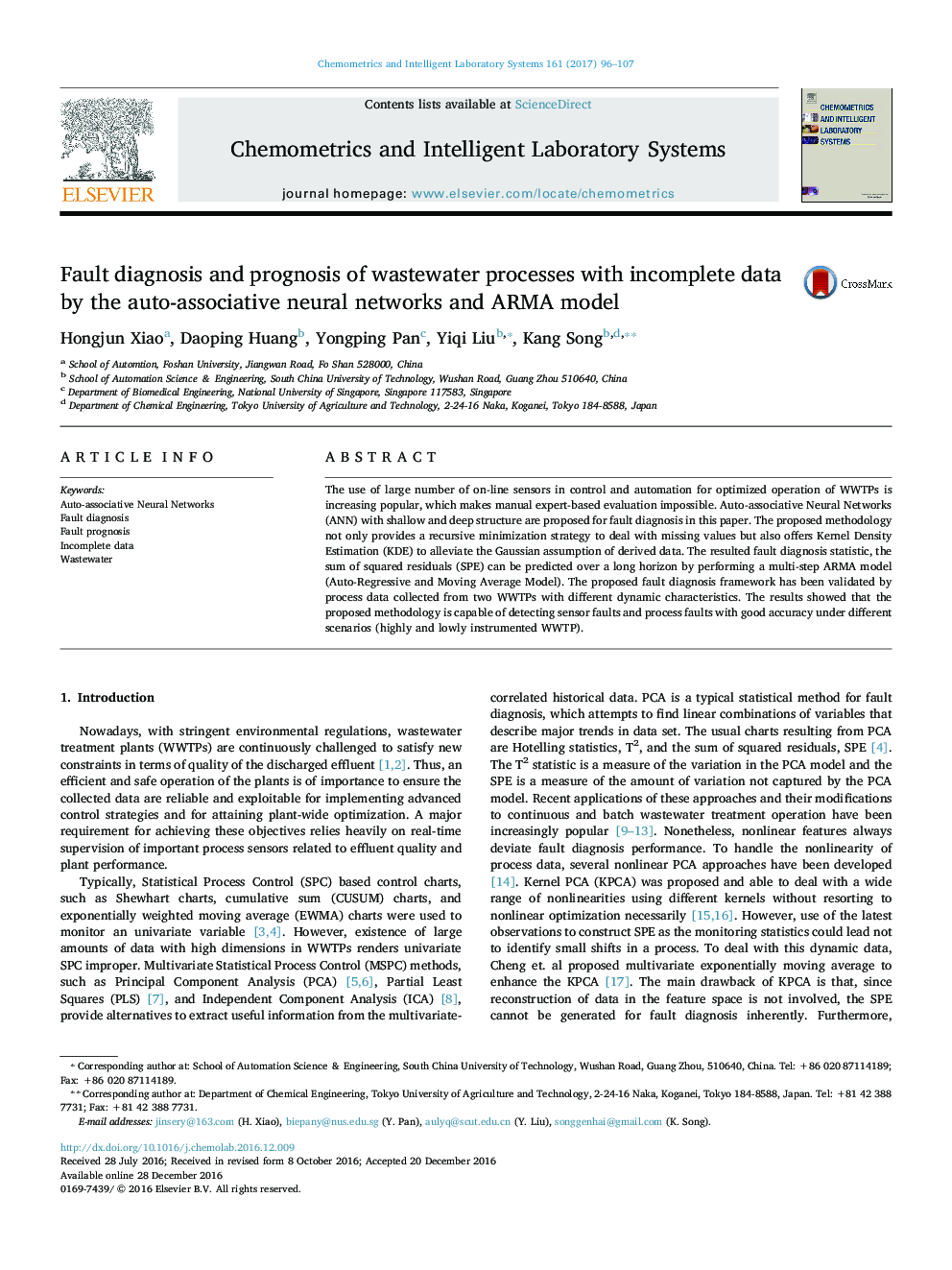| Article ID | Journal | Published Year | Pages | File Type |
|---|---|---|---|---|
| 5132337 | Chemometrics and Intelligent Laboratory Systems | 2017 | 12 Pages |
â¢Development of shallow and deep ANNs for fault diagnosis.â¢KDE-based fault diagnosis control limit to reduce the false alarms and faulty declaration.â¢A minimization strategy was proposed to deal with the missing value estimation.â¢An ARMA model to make multi-step-ahead prediction for SPE.â¢This methodology was validated through highly and lowly instrumented WWTPs, respectively.
The use of large number of on-line sensors in control and automation for optimized operation of WWTPs is increasing popular, which makes manual expert-based evaluation impossible. Auto-associative Neural Networks (ANN) with shallow and deep structure are proposed for fault diagnosis in this paper. The proposed methodology not only provides a recursive minimization strategy to deal with missing values but also offers Kernel Density Estimation (KDE) to alleviate the Gaussian assumption of derived data. The resulted fault diagnosis statistic, the sum of squared residuals (SPE) can be predicted over a long horizon by performing a multi-step ARMA model (Auto-Regressive and Moving Average Model). The proposed fault diagnosis framework has been validated by process data collected from two WWTPs with different dynamic characteristics. The results showed that the proposed methodology is capable of detecting sensor faults and process faults with good accuracy under different scenarios (highly and lowly instrumented WWTP).
